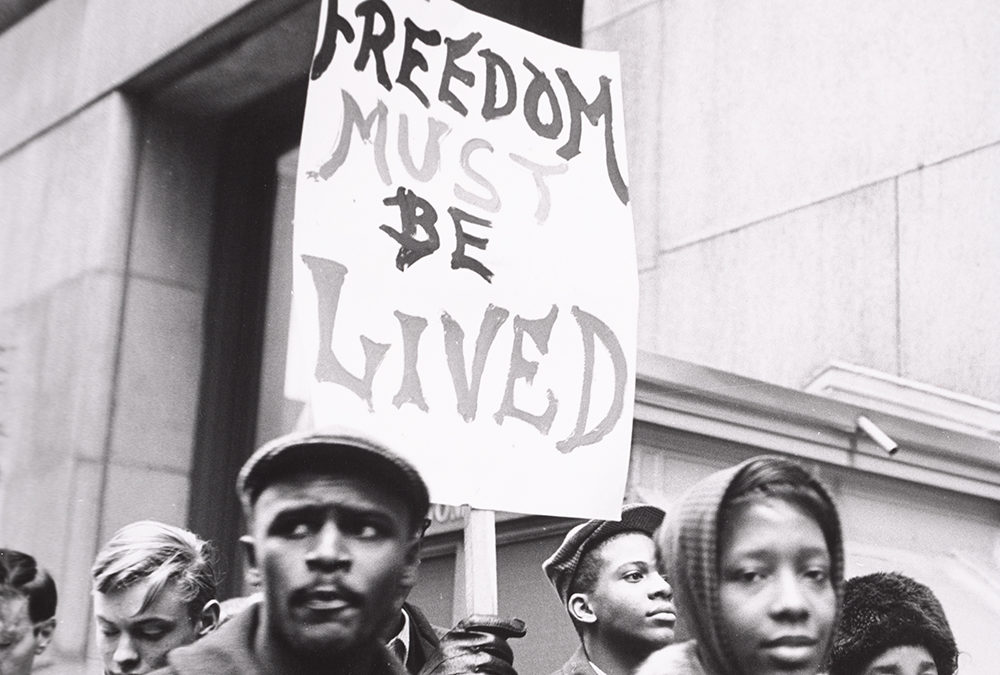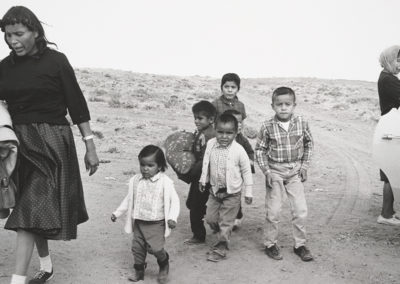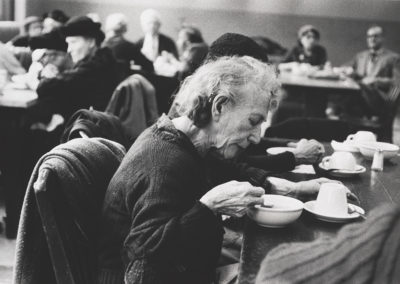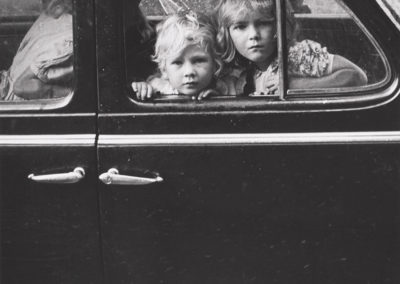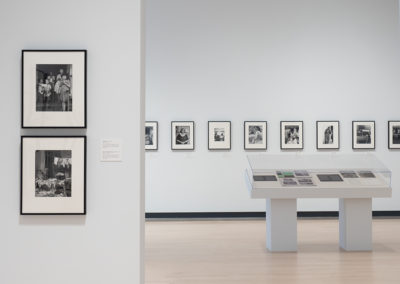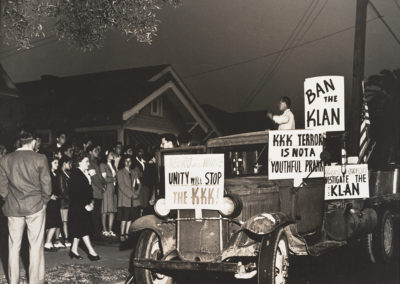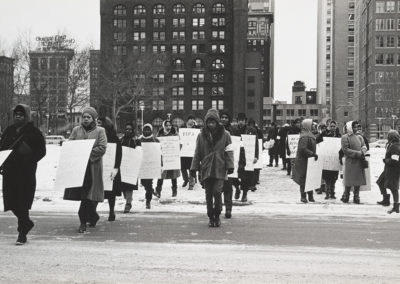NORTON GALLERY AT PHOENIX ART MUSEUM
July 21, 20121 through January 2, 2022
Featuring over 80 photos and extensive archival materials, this visually and emotionally arresting exhibition is drawn entirely from the vast Marion Palfi archive at the Center for Creative Photography (CCP). It is the first major exhibition of Palfi’s work since her death in 1978 and offers a fine opportunity to consider the work of a woman photographer who, according to the exhibition’s curator, Dr. Audrey Sands of the CCP, “shows us how photography can be used as a political and social tool to change oppressive systems… Palfi used the medium to advocate for her belief that basic human equality must not only be written into law but upheld and protected in all areas of daily life.” The fact that Palfi’s sentiments and intentions could have been formulated today, make her images as valid in 2021 as they were when she first created them.
Palfi was born into an upper middle-class family in Berlin in 1907, the child of Polish and Hungarian parents. Involved in the arts from an early age, she had opened photo studios in Berlin and Amsterdam, before fleeing from Nazi Germany to the United States in 1940. Having witnessed unimaginable racism and nationalism in WWII Europe, she found here “a reality far from the myth of the American Dream.” Her horror at the social, economic and racial inequities led her to spend nearly four decades traversing the United States and as, a “social-research photographer,” (her own words), documenting the rampant poverty, discrimination and racism suffered by Black and Native Americans, as well as the elderly, the mentally ill and others.
The exhibition is organized into the following four sections:
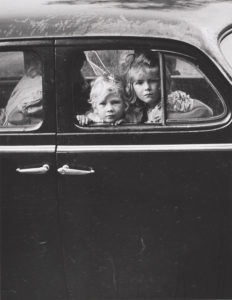 Palfi’s study, Children in America (1945-52) was made possible by a 1945 fellowship to study children living in extreme poverty. The images of individual or groups of children, taken in Waterbury, CT; Los Angeles; Washington, D.C.; and New York City are direct and riveting in and of themselves, while offering clear evidence of the impoverished lives of their subjects. One image shows only a text, engraved in stone: “For every child let truth spring from Earth | And justice and mercy look down from heaven.” The series was published in 1952 as a photo book, Suffer Little Children. President Franklin and Eleanor Roosevelt considered Palfi’s photos important evidence in support of desegregation efforts.
Palfi’s study, Children in America (1945-52) was made possible by a 1945 fellowship to study children living in extreme poverty. The images of individual or groups of children, taken in Waterbury, CT; Los Angeles; Washington, D.C.; and New York City are direct and riveting in and of themselves, while offering clear evidence of the impoverished lives of their subjects. One image shows only a text, engraved in stone: “For every child let truth spring from Earth | And justice and mercy look down from heaven.” The series was published in 1952 as a photo book, Suffer Little Children. President Franklin and Eleanor Roosevelt considered Palfi’s photos important evidence in support of desegregation efforts.

Freedom Must Be Lived (1940s-1970s) encompasses several projects, spanning three decades, documenting the systemic racism that was tearing the country apart and focusing more specifically on the Civil Rights movement, racial discrimination in housing and prisons and a lynching in a small Georgia town. Among the many revealing portraits, of both Black and White subjects are one of a Black couple, seated at the back of a bus. Above their heads it reads: “This part of the bus for the colored race.” Another focuses on a sign above a business: “We cater to White Trade Only.” Although in some respects an objective photo-journalist, it is easy to discern where Palfi’s sympathies lie: many photos of Blacks show sad, scared, wistful people, while those of whites— particularly of Klansmen or Nazis—are cold, callous and frightening.

At First I Liked the Whites (1964-19712) is a study of the dispossession and relocation of Indigenous peoples by the U.S. government through the Indian Relocation Act of 1956.The Act’s intention, by decreasing funding to reservations, was to encourage Native Americans to leave their ancestral lands and to assimilate into metropolitan areas. Palfi lived on the Hopi reservation in Northern Arizona for two years, documenting what she saw as the long-term deleterious effects of this program. The subjects in this series sit or stand, individually or in informal groups, hard at work or idle. Even in ostensibly social groups there is no mirth. Others look like refugees, lost, reminiscent of images of people fleeing the Dustbowl of the 1930s. The project remained unpublished at the time of Palfi’s death.
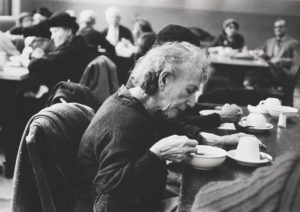
You Have Never Been Old (1955-58) is Palfi’s study of aging in New York City. “Unhappily, our culture tends to discard the older person…Old age is thought of as something discreditable, something of which to be ashamed.” (Palfi) The project documents people in institutions for older adults, including men’s shelters; physical and psychiatric rehabilitation centers and centers for residential care. Featuring a series of case studies, the project was circulated as an exhibition in 1959.
“Freedom Must Be Lived: Maion Palfi’s America, 1940 – 1978” offers comprehensive and enlightening wall texts in each section, as well as cases of pertinent archival material. Museum members will also find an excellent overview in the Summer/Fall issue of the Members’ Magazine. Although I had never before heard of this photographer or her work, I am grateful to Audrey Sands, the CCP and Phoenix Art Museum for organizing this outstanding show, which has widened my horizons, opened my eyes and left a hole in my heart.
Photo Credit for Feature Image
Marion Palfi, Chicago School Boycott, 1963-1964. Gelatin silver print. Center for Creative Photography, University of Arizona: Marion Palfi Archive/Gift of the Menninger Foundation and Martin Magner.
© Center for Creative Photography, Arizona Board of Regents.
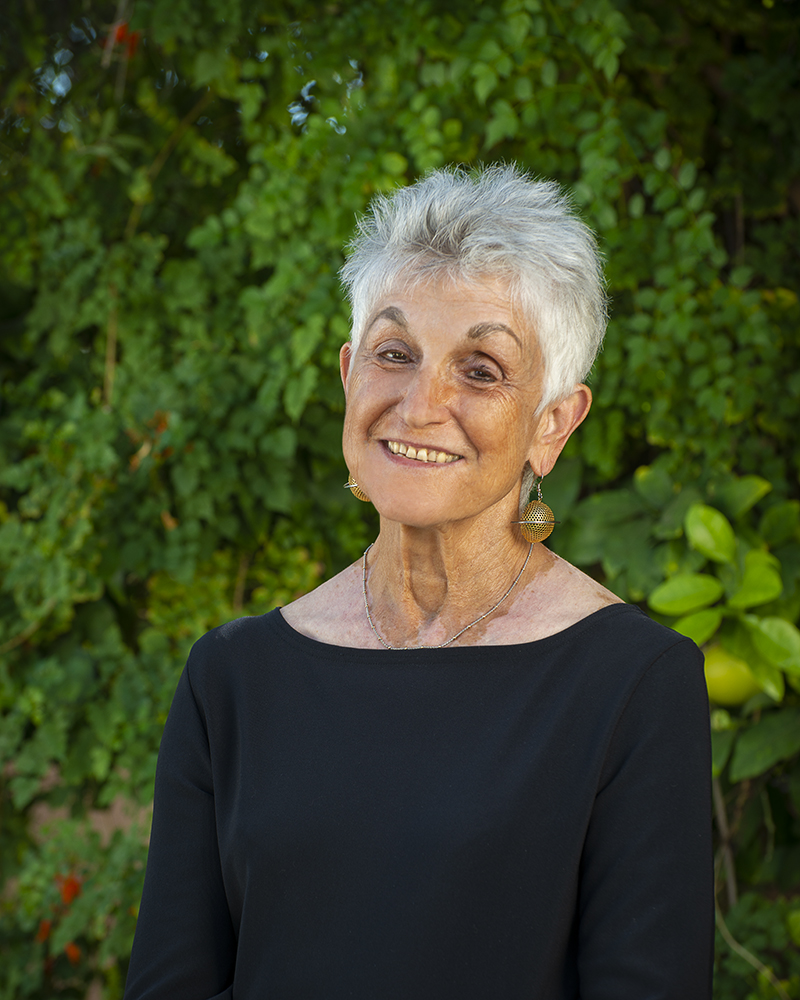
Karen Hodges
Contributing Writer
Karen Hodges worked in the Curatorial Department of Phoenix Art Museum (PAM) for over two decades. Although mostly involved with painting, sculpture and decorative arts, in all areas of the Collection, she fell in love with photography when the Museum’s cooperative agreement with the Center for Creative Photography (CCP) led to the establishment of the Norton Gallery. Work with Curator, Becky Senf, editing gallery and informational materials, deepened her interest in this art form. She served on the Board of INFOCUS from its founding as a PAM support group and continues to serve as “scribe” (secretary) to the Board of AZPA. Although self-described as a mediocre photographer, Karen has—within her means—collected photography and photo books for years and will continue to do so, even when she runs out of wall and shelf space!
Image Credit: Craig Smith
Contact Karen

